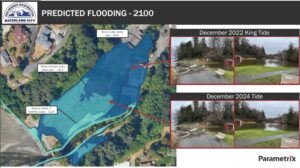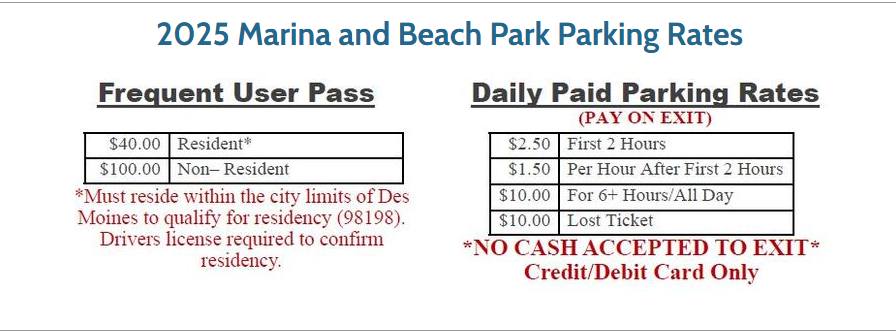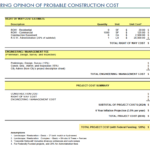Some bits of business…
I gave new City Manager Katherine Caffrey the best gift ever. Two weeks off from the wonders of me. And then welcomed her back with a 3,000 word essay. Break’s over. 😀
Future Agendas is the closest thing the City currently has to a calendar of upcoming City Council topics. It’s not dynamic, ie. you have to click it every time you want to see a new version. And it’s not always accurate. But until we develop a genuine calendar, this can be very useful if there is a particular issue you don’t want to miss.
Important change: City Manager Caffrey has adopted a new format. Good news? Much more colourful! Bad news? Super short-term, ie. it has zip past February. This is hopefully temporary. All governments have a broad notion of where various items will fit into the year.
Duwamish Head
A couple of people asked me “What happened to the sailboats?” This race, usually one of the best of the year, was marred from the start by bad weather. Started late. Got scrubbed at the mid-way point. So, if you were wondering why you did not see boats sailing across the finish line in late afternoon, that’s the deal. To be clear: by ‘bad weather’ I only mean no wind. In sailing wind is the only thing that really matters. Cold and rain are generally no impediments that cannot be overcome by purchasing muy caro (and muy macho) gear. 😀 The main races are in winter is because this is usually the time of the best winds in Puget Sound. Just. Not. This. Saturday. 😀 Still, a great time and some great piccies at the Three Tree Point Yacht Club Facebook Page.
Yelling Fire in a crowded tax season
I don’t wanna be that guy, but many of you received your Fire Benefit Charge details. Despite voting to approve it, the statements have been greeted with surprise, confusion, and in some cases buyer’s remorse. I won’t get into South King Fire’s business (mainly because 1I want someone to show up if my house is burning 😀 ) However, to the extent it affects the City, it’s still an interesting discussion.
First, despite what you may have heard, when the Finance Committee initially proposed our ill-fated property tax levy back in January 2024, no one was considering how it related to the FBC. However, somewhere in April-ish SKF was the origin of the strategy to place the levy on the ballot twice, ie. if it failed in August put it back on the ballot in November. I strongly disagreed and in fact, my colleagues (in private, of course) seemed to agree. But the administration heeded their advice, based on SKF’s ongoing success in getting their ballot initiatives passed. And apparently that was enough to get some of my colleagues to …er… ‘reconsider their decision’ 😀 on the ‘second try’ thing.
The first I heard of the notion of using the FBC as a sales tool for our property tax levy was from former SKF Chief and former councilmember Vic Pennington. But that began after the August 6 election. The notion was that the FBC would ‘free up capacity’, and thus be a net zero for residents even with the property tax levy.
It is understandable that proponents would want to provide new sales arguments after that fail. But honestly? That never would have occurred to me. My mind just does not work that way.
Say it out loud, “Even with the City’s new tax, you’ll still come out ahead so long as you vote for this other tax (..er… ‘fee’). But you gotta do both!” Which sounds like something a former SKF Chief might say. 😀 (Sorry, Vic.) But seriously, making one tax contingent on another did not seem like a great idea. Especially if you’re not 100% sure about the effects of that other tax.
I applaud SKF for acknowledging their ongoing funding issues and finding a creative solution. There are some great aspects to the FBC (eg. Port of Seattle property is tax-exempt but is subject to the FBC. Wish we could do that!) My concerns, which I stated at the presentation SKF gave to the City Council, were two-fold…
a) The FBC seemed hard to calculate. I think they coulda provided some sort o’ calculator on their web site to allow voters to instantly know how it would affect them before they voted. Check this out:
FBC = √square feet* x (18)* x (category factor) x (response factor) x (risk factor) x (fire flow factor) x (discount)
“I’ll take Polynomials for $400”, Alex. 😀
b) Also, and this may just be me, the ‘risk component’ felt uncomfortably like insurance. It is quite understandable to charge many fees based on usage (water, electrics, sewer, etc.) Up to a point, one can choose to conserve those things. However, First Responders like police and the brave men and women who are gonna save my house (in spite of this article!) provide an intrinsically different service. To me, what they do feels more like a responsibility we should all share in equally. For example, I’m trying to imagine how it would be if police were funded on a similar model – charging residents a variable rate for public safety based on the current crime stats on their street or whether or not they own a private security system. Not a fan.
City Manager Stuff
Even with her well-earned break, Ms. Caffrey has really set the bar with her City Manager’s Report January 3, 2025 The promo for the Des Moines Historical Society is always welcome. One minor complaint: either the piccie of the boy with a salmon is a stock photo or I’m ratting her child out to DFW for fishing out of season! jk.
This Week
After several much needed weeks off, once again the games begin, 2Maximus… 😀
Monday: City Audit Entrance Conference. Every year the City is audited by the State. This is for 2023 and it is routine – nothing like the archetypal “OMG, we’re getting audited, Frank!” 😀 As I keep saying, the City’s books are surprisingly complex, so the State rotates the areas it reviews every year, covering most aspects in sort of a 3-4 year cycle. It will also add on any potential weaknesses it noticed from the previous year. In general, these are fairly uneventful. The last noteworthy ding (‘finding’) was 2020 and that was not particularly serious. Very few Cms show up for these. I do because, well… I guess I have nothing better to do? 😀
Monday 3:00pm: Speaking of good (and Creole) food! Grand Opening of Jambalaya Kitchen at Highline College Building 8.
Thursday 4:00pm: Transportation Committee (Agenda) First meeting of the year is basically setting a planning calendar.
Thursday 5:00pm: Environment Committee (Agenda) Also, our planning calendar andA the Estuary presentation the full council will be seeing at 6:00pm? Not sure why the redundancy. But it is important, I guess. I will be asking my colleagues for their ideas. I have a couple.
I think it’s a fine time for a top-up. 🙂
Thursday 6:00pm: City Council Meeting (Agenda) Usually the first meeting of the year is fairly benign. But not this one. In fact, this one gets the Pee Wee Herman Action Packed Seal of Approval!
The issues range from the sublime to the rid… er… less sublime 😀 and include:
- Ferry Presentation by Peter Philips
Inshallah, may I serve long enough to see this guy not get another ‘six month’ contract. This was a topic of that 3,000 word essay. If I had a dime for every vote the Council has taken in my tenure that were ‘just a small step, we can always change our minds’, I’d have a lot of dimes.
- Public Records Fee Schedule Update
This is something the Finance Committee discussed last year. My only gripe is that the specifics of the proposal should also be first vetted by the Finance Committee before going to the full Council. If we are not capturing our costs, obviously we should have that discussion.
 City of Des Moines Mission, Vision & Values
City of Des Moines Mission, Vision & Values
Inshallah, may I serve long enough to see us notice that the majority of the city is nowhere near the water. And have the ‘vision’ to do something about it.
- Des Moines Marina Steps Project
Inshallah, may I serve long enough to… OK, I’ve beaten on that expression enough. This was also a part of those 3,000 words. When we voted for those bonds in 2023, we were told that they had to be applied to these specific projects. And we were specifically told that the project had to be bid as one all-inclusive deal. And yet, the agenda now talks about breaking the project into smaller pieces or even backing away? How are these things even possible, Grasshopper? And if so, why are they now only possible simply because we came up short on the dough-re-mi?
 Des Moines Creek Estuary Project Update. This is no joke. An ongoing challenge with the Beach Park, nay the entire Marina, is flooding and climate change. Just keeping it (and those lovely historic restorations) was always going to be expensive. But now take into account that one of the original purposes of restoring the Creek was salmon recovery. And to do that, eventually we also need to remove the artificial sea wall (‘rip-rap’) surrounding the estuary mouth. How it will impact nearby homeowners and denizens of the Beach Park is going to be an interesting discussion. If you live or use the Beach Park, I strongly encourage you to read this portion of the packet carefully.
Des Moines Creek Estuary Project Update. This is no joke. An ongoing challenge with the Beach Park, nay the entire Marina, is flooding and climate change. Just keeping it (and those lovely historic restorations) was always going to be expensive. But now take into account that one of the original purposes of restoring the Creek was salmon recovery. And to do that, eventually we also need to remove the artificial sea wall (‘rip-rap’) surrounding the estuary mouth. How it will impact nearby homeowners and denizens of the Beach Park is going to be an interesting discussion. If you live or use the Beach Park, I strongly encourage you to read this portion of the packet carefully.
- Telecommunications Franchise Agreement with Ziply
I confess, as of this writing I have not finished plowing through the thing because these franchise agreements go on for pages and pages. But I will. People have screamed about both a lack of coverage and choice in broadband service here for decades and I do intend to read this thing carefully because having those things really is a strategic interest for the City. One important value proposition for Des Moines should be remote work and/or businesses that can support Seattle without requiring commuting. Without much better broadband we cannot do that. To me those services are just as important as physical links (like a ferry).
 Council City Logo Discussion
Council City Logo Discussion
In another hard hitting issue, we will be discussing some form of coherent branding? Actually, this does matter to me in the sense that we have a zillion web sites and brands. And in many sections of the city we literally don’t say ‘Des Moines’. Eg. the new Redondo restrooms will say ‘Redondo’ which is ridiculous. If we spend over a million dollars on a bathroom, I want visitors to know who the hell paid for it! 😀
I’m also not thrilled that over the past two years the City unilaterally embarked on its own ‘temporary’ branding, which is now all over the place and cost however much it cost. Frankly, I wish we had that moolah back in order to pay for all the new branding.
I’ll be honest: I kinda like the old brand. I tend to favour older designs (buildings, logos) because although they may look ‘stodgy’ for a few years, over time they tend to look better and better.
However, I will be moving to have this opened up to the Arts Commission for a public competition. As we have done with other public arts projects. We have a ton of talented professional artists in the area and I’d rather have them take a whack at it than the seven of us who are definitely not artists.
- Non-Profit Summit Hosted by Des Moines City Council
I have no idea what this is. I can guess. But any agenda item called a ‘Summit’ with no description deserves a bit of mockery.
Last Week
- I spent a certain amount of time on STNI stuff, including this letter to our State legislators calling for a revision to the law to open up Port of Seattle funding to cities like Des Moines for aviation impacts. The letter gets a little (ok, a lot) into the weeds, but besides ‘the noise’ there are many other problems in our relationship with the Port. A big one being that there is no path to funding to compensate for the harms caused just by being next to the eighth largest airport in America. This legislation is meant as a path to at least partially addressing that.
I also put out Part Deux of my year-end grab back. It contains gems such as
You call this a Happy New Year? 12/31/2024 – JC Harris For Des Moines, Washington
 New Marina Parking Rates
New Marina Parking Rates- An article on Oklahoma City which funds downtown projects in a very cool way!
- Some stats on property values, commercial, home, tax-exempt and how we compare with the rest of King County.
- Some gossip on three new businesses!
- An update on Middle Housing
- And an AI Generated Christmas Card I will treasure for at least 361 more days. 🙂
1A certain staff member referred to me recently as ‘Maximus’. I assume because the character spends most of the movie being tortured to death?







 Just to be fair, here is what ChatGPT came up with for Federal Way. Apparently the AI has certain ideas about Christmas in the Great Northwest. I do think it’s interesting all the details it gave to Des Moines. Remember: AI is trained on data from somewhere. If I had to guess, I’d say that ChatGPT threw in all those extra Des Moines doodads because that is how people talk about Des Moines. It’s a (slightly 😀 ) exaggerated representation of how much people like the Marina – or how they wish it was like.
Just to be fair, here is what ChatGPT came up with for Federal Way. Apparently the AI has certain ideas about Christmas in the Great Northwest. I do think it’s interesting all the details it gave to Des Moines. Remember: AI is trained on data from somewhere. If I had to guess, I’d say that ChatGPT threw in all those extra Des Moines doodads because that is how people talk about Des Moines. It’s a (slightly 😀 ) exaggerated representation of how much people like the Marina – or how they wish it was like.




 Item 2. 2025 2026 BIENNIAL BUDGET
Item 2. 2025 2026 BIENNIAL BUDGET













